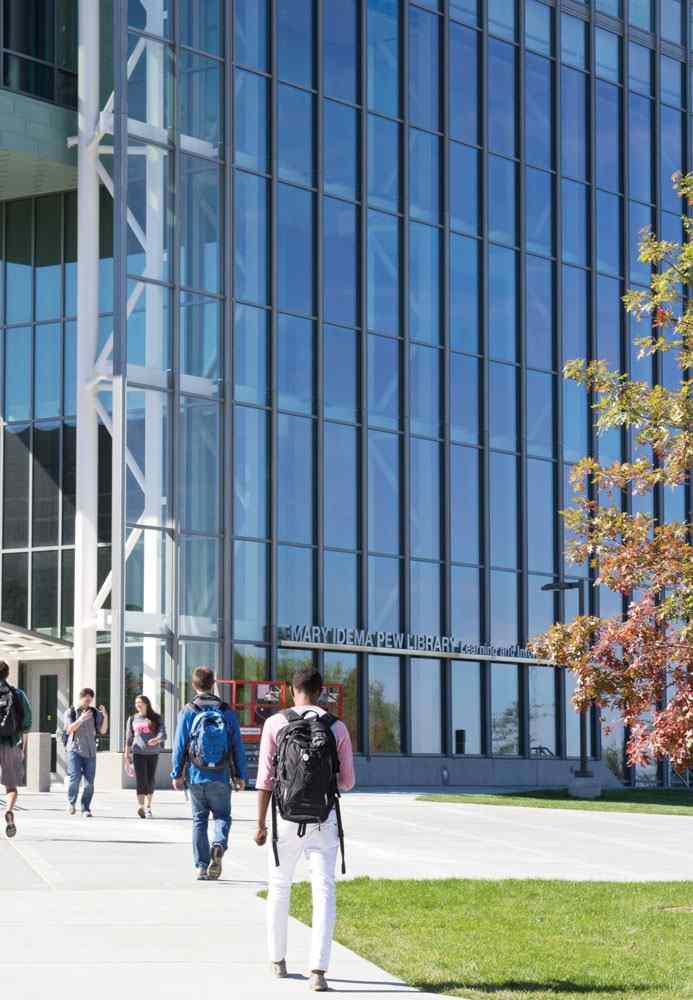Sustainability Issues: Energy
Sustainability at GVSU
Grand Valley Joins Chevrolet to go Green, Combat Carbon Emissions
Grand Valley became a partner with Chevrolet’s Campus Clean Energy Efficiency Campaign — a voluntary program to reduce carbon emissions. The program enables the university to receive funding from Chevrolet through energy efficiency improvements.
To qualify, Grand Valley had to demonstrate that its energy-based greenhouse gas reductions on a campus-wide scale surpassed the performance of the top 15 percent of campuses in the nation.
“Grand Valley is the only university in Michigan that has qualified for Chevrolet’s program,” said Terry Pahl, facilities engineer at GVSU who applied for the program. “The millions of dollars we save from energy efficiency improvements and the additional funds we’ll receive from Chevrolet allow us to reinvest in the university and our students.”
During the last 15 years, Grand Valley has implemented more than 250 energy-savings projects, which total more than $2 million annually in cost avoidances from long-term, energy-efficient projects and $1.5 million in cost avoidances from energy conservation programs and initiatives, which change each year, such as the Energy Competition.

GVSU Initiatives
Climate Action Plan Grand Valley’s Climate Action Plan outlines steps to achieve carbon neutrality by 2043. Go to gvsu.edu/sustainabilityreports/.
LEED facilities Grand Valley has committed to designing and building to Leadership in Energy and Environmental Design (LEED) Silver certification levels. LEED buildings use 30 percent less energy, 40 percent less water, and 75 percent less material than regular buildings.
Energy-saving projects Grand Valley saves more than $2 million annually by monitoring and documenting energy consumption and implementing energy-efficient practices, procedures, and technology. Examples include installing more efficient lighting and controls, integrating occupancy sensors with HVAC controls, applying Demand Control Ventilation methods, improving building system infrastructure, adjusting temperature settings, promoting energy education, and purchasing Energy Star® products.
Student conserve-energy challenge Each year student housing units compete to see who can reduce energy consumption the most. This competition is part of a broader campaign to encourage behavior change in students.
Michigan Alternative and Renewable Energy Center (MAREC)
MAREC is a leader in education and the advancement of emerging technology with emphasis on alternative and renewable energy. Visit gvsu.edu/marec/.
Renewable energy Both the Kelly Family Sports Center and MAREC use photovoltaics in an exploratory manner as a partial energy source, and the sports center has geothermal wells that help maintain temperature levels.

Take Action
Turn electronics off when not in use This includes lights, TVs, stereos, and kitchen appliances. Unplugging electronic devices that continue to draw power when not in use, like phone chargers, also helps conserve energy.
Turn the thermostat down By adjusting the thermostat just a few degrees, you can substantially reduce your energy use. You may find it helpful to program your thermostat to a different setting when you are not home or while you are sleeping. Lowering the setting on your hot water heater or line drying your clothes may create additional savings.
Report energy waste Contact the Facilities Services department at (616) 331-3000 if you see energy that’s being wasted on campus.
